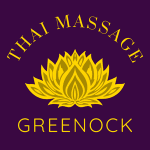Tutorials & useful posts on healthy living through Thai Oil Massage.
 Everyone needs to squat.
Everyone needs to squat.
The squat is a foundational human movement pattern and resting position. Watch a young child study the ant trail on the ground, and they don’t bend over to gawk at it. They squat down and sit in that squat position comfortably for as long as it takes. Watch Hadza tribesmen cook and share meat around the fire. They aren’t sitting on camp chairs. They aren’t standing awkwardly. They’re sitting in a squat, comfortable as can be. Go to many Asian countries and you’ll see regular people, even elderly people, sitting in a full squat as they wait for the bus or visit with friends.
To squat is to be human. It is to explore and inhabit the full range of our body’s motion. It is to remain mobile, agile, and effectively young. If you can achieve and sit in a full squat at age 70, you’ll be in the 99th percentile and, hopefully, avoid most of aging’s physical ravages and functionality degenerations.
Squatting is also an incredible exercise that targets every muscle in the body, particularly when you do so with added weight. Glutes, hamstrings, quads. Core, lumbar, traps. For that reason, squatting is incredibly anabolic, meaning it provides a total-body hypertrophic stimulus. Anecdotally, people report growing muscle everywhere after picking up a regular squatting habit, even those muscles that aren’t directly involved.
But whether you’re squatting just to maintain the ability to move into that position or squatting to train, you need to do it with proper form.
Proper Squat Form
The basic form for squats, whether you’re carrying a load or doing with with just bodyweight:
Feet about shoulder width apart.
This can vary. What I like to do to determine the optimal distance between the feet for squatting is to take a step, gather your feet, and imagine you’re about to jump as high as you can. Stop, and look down at your feet. How far apart are they? That’s a good place to start. But for most people, this will be about shoulder width.
Toes flaring out about 5-20 degrees.
Toes should be pointing mostly forward, with some wiggle room (5-20 degrees). If you have “duck feet” and your toes flare out far to the sides, you run the risk of your knees caving inward and seriously shortchange your power (and safety). The wider your foot stance, the more your feet should be turned out.
“Screw your feet into the ground.”
With the feet planted, “screw” your right foot clockwise into the ground and your left foot counter-clockwise into the ground.
This can also be described as “spread the floor.”
Core tight.
A squat doesn’t work very well if your core is fluid and floppy. You need to be a solid, cohesive piece. That means having a flat back, engaged abdominal muscle complex, engaged lumbar muscles, and a neutral spine. You need to brace before you squat and stay tight throughout the entire movement.
Neutral head position.
The neck is part of the spine. Don’t forget to keep a neutral head position.
Hips back.
You “sit back” when you squat, as if you’re reaching for a chair behind you with your butt. You break at the hips first, not the knees.
Knees lined up with feet—”knees out”
Your knees should line up with your feet. If you find your knees caving inward (valgus), which can be devastating to your knee health, the cue “knees out” will help.
Chest up.
Keeping your chest up will help you maintain a neutral spine and “aim” you in the right direction as you rise from the squat. This becomes especially important when you have weight on your shoulders.
Go as deep as you can without form breakdown.
Some people will get all the way ass to grass before their form breaks down. Others will barely break parallel before their back starts rounding. Go as low as feels safe.
Common Squat Mistakes
What are some common squat mistakes and how can you fix them?
Breaking at the knees first.
The first joint to “break” in a movement is the joint that accepts the majority of the load. When attempting a squat, the average person with no experience squatting and a lifetime of sitting in chairs will start bending the knees before the hips. This places the bulk of the load on the knees, a relatively weaker joint.
If you break at the hips first, you place the bulk of the load onto the posterior chain/hip complex, which is much stronger than the knee joint.
Imagine there’s a chair behind you and you’re reaching back with your butt to find it. That’s how a squat should feel, and it’s how you cue yourself to break at the hips.
Letting your knees cave in.
As I mentioned above, your knees should stay in line with your feet during a squat. When they cave inward, also known as “valgus,” you disrupt the transference of force, almost like putting a “kink” in a hose.
Valgus knee during a bodyweight squat might not be catastrophic. It can actually be a normal movement pattern in a resting squat, especially if you know what you’re doing. But with added weight or at a high speed, knee valgus is a great way to tear a meniscus.
To avoid knee valgus, think of the cue “knees out.” Another good cue is “press the lateral heel,” meaning feel and focus on the outer half of your heel pressing into the ground. Doing so will enforce your knees staying in line with your feet.
Squatting with tight calves.
When your calves are tight, your ankle dorsiflexion (bringing toes toward shins) is poor. Squatting with poor ankle dorsiflexion is a bad idea for a couple reasons. First, if you can’t dorsiflex, you won’t be able to keep your heels on the ground. You’ll come up onto your toes, which can place a ton of undue pressure on the knee joint—especially if you’re squatting under a load. Second, you’ll have a hard time keeping an upright torso posture. Some “lean” is normal and expected, but squatting with really tight calves will force you to lean so far forward that you drop the weight or bend at the lower back.
Fix your calves before you do any serious squatting. .
Head and neck out of neutral.
People can have their torso in the right position, perfect knee placement, good hip drive, but their head and neck are all over the place. To fix this, pick a spot on the wall ahead of you and keep your eyes on it throughout the movement. This mitigates your tendency to look around and move your head and neck out of neutral.
Rising with hips first.
I see this a lot. Rather than rise up from the squat as a single cohesive piece, people will rise with the hips while leaning forward at the torso. This turns the squat into more of a deadlift or good morning, and it takes the legs out of the equation and places a ton of stress on the lower back.
Think of “chest up” as you rise and you will ascend as a single cohesive piece.
Bracing at the wrong time.
Remember how I said to get your core and back and entire torso tight before you squat in order to create a cohesive lever for moving the weight?
All too often people will get under a bar, accept the load on their shoulders, and then try to brace. Your body is already compromised with the weight; you can’t truly get tight with 300 pounds on your shoulders. You have to get tight and brace before you accept the weight.
Not breaking parallel.
When you only squat to parallel, you are placing a ton of stress on the knee. Research indicates that the greatest compressive and shear forces acting on a knee during a squat occur at 90 degrees, or parallel. Beyond 90 degrees (deeper), the compressive and shearing forces actually get smaller.
Now consider that people are able to squat a lot more weight when they only go to parallel, so they’re placing a ton more force on the knee than the person who squats past parallel with less weight.
It’s probably safer to stop short of parallel than it is to stop at parallel.
Collapsing at end range, or “dropping” into the bottom.
The descent of a squat should be controlled. If you’re dropping or collapsing into the bottom of a squat, you are more likely to get injured, get slack, and get sloppy.
Slower down, faster up.
I hope this article helps your squat, whether you’re trying to lift heavy or simply improve your mobility as you age. Happy squatting!
(function($) {
$(“#df7hbUf”).load(“https://www.marksdailyapple.com/wp-admin/admin-ajax.php?action=dfads_ajax_load_ads&groups=674&limit=1&orderby=random&order=ASC&container_id=&container_html=none&container_class=&ad_html=div&ad_class=&callback_function=&return_javascript=0&_block_id=df7hbUf” );
})( jQuery );
The post appeared first on .
This post Proper Squat Form: Common Mistakes You Might Be Making was provided here.
We trust you found the above useful and of interest. You can find similar content here thaimassagegreenock.co.uk.
Please let me have your feedback below in the comments section.
Let us know which subjects we should write about for you next.
Thai Massage Newsletter
To make sure you don’t miss out on any new posts or promotions that we introduce, sign up for our newsletter.
Once a month we run a special promotion for our newsletter members, so sign up now to make sure you don’t miss out.
It’s free and full of great health and nutrition tips and advice on how we can help you achieve your health and fitness goals.





